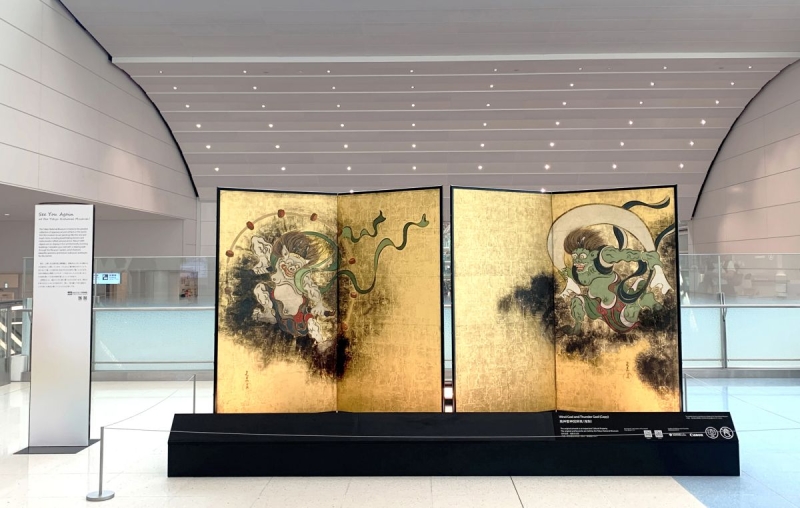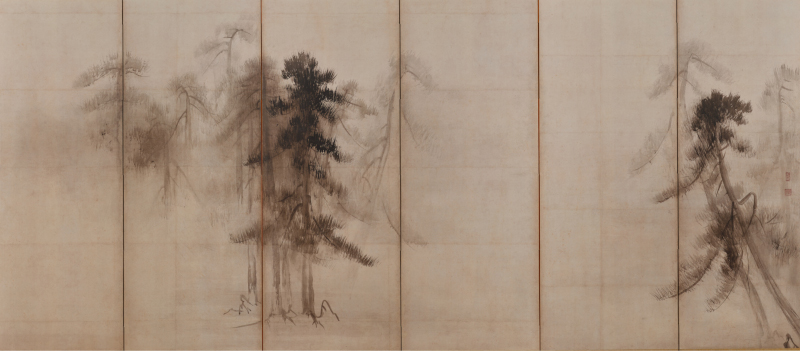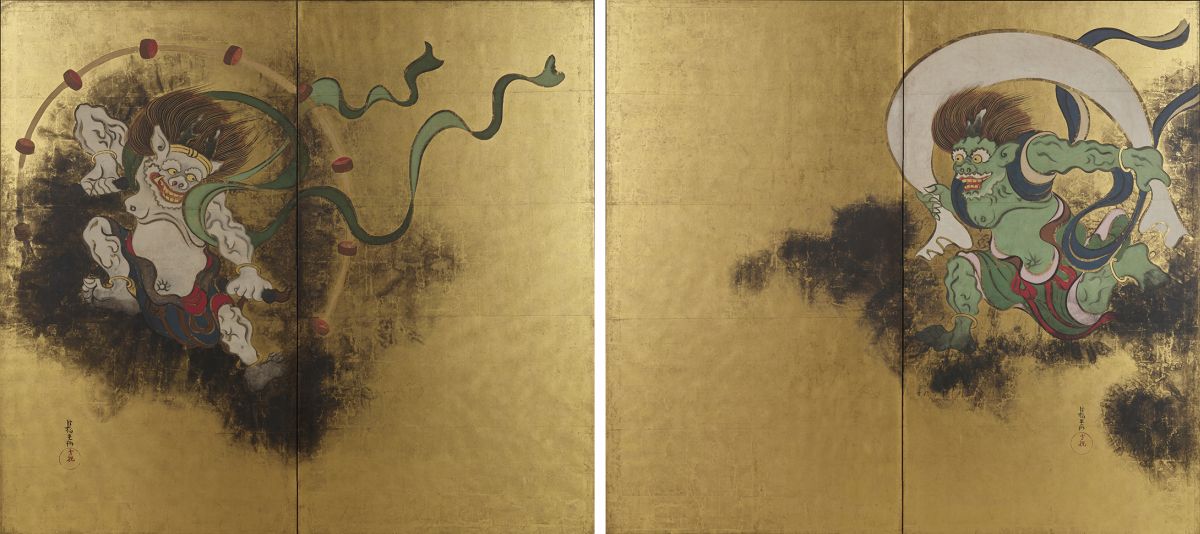
| Period | June 27, 2024 (Thu) - March 31, 2026 (Tue) |
|---|---|
| Place | Haneda Airport |
| Organizers | National Center for the Promotion of Cultural Properties (CPCP); Japan Airport Terminal Co., Ltd.; Tokyo International Air Terminal Corporation |
| Inquiries | 03-5834-2856 (National Center for the Promotion of Cultural Properties) |
High-resolution facsimile of national treasures and important cultural properties in the collection of the Tokyo National Museum will be on display without glass cases at Haneda Airport in order to make overseas visitors to Japan as well as domestic travelers more broadly familiar with cultural properties. Although cultural properties are normally on display for only limited periods and in limited locations, high-resolution facsimile allow them to be viewed in depth and up close.
The theme of the exhibition “Wings of Japanese Art at HANEDA” is “Japan’s four seasons.” The high-resolution facsimiles on display at Haneda Airport will be changed according to the season. A high-resolution facsimile of Pine Forest , works depicting “winter,” will be on display in the 3F International Flight Departure Lobby in Terminal 2. Visitors can enjoy the beauty of Japanese culture and its close connection to the four seasons. In addition, a high-resolution facsimile of Wind God and Thunder God , will be on display on the 4F “Edo Stage” in Terminal 3 (except when events are being held in the space).
Details and display periods of the high-resolution facsimile
| Location | 3F International Flight Departure Lobby, Terminal 2 |
|---|---|
| Display period | Thursday, November 27, to late February 2026 (tentative) |
Using only powerful brush strokes with different shades of ink, the artist has depicted pine trees looming amongst the mist. This is a masterpiece by Hasegawa Tohaku, one of the foremost painters of the Azuchi-Momoyama period. The painting seems to play tricks on our senses. Can you see the mist swirling and the light peeking out from the shadows? Can you hear the wind rustling through the pines? The painting's charm lies in the way the artist has faithfully captured the atmosphere of the scene rather than painstakingly trying to recreate the actual shape of the trees. This is also why the work has been described as the pinnacle of Japanese ink painting. If you look closely, you can see the hazy outline of a snowy mountain behind the trees in the distance. Is this late autumn, with winter just around the corner? Or are we looking at spring, when the snow begins to melt? Some say the painting depicts a pine grove near the shore of the Noto Peninsula, Tohaku's home province. Others say it shows the Miho no Matsubara pine grove or the Amanohashidate sandbank, both subjects found in older Japanese paintings. Naturally, there is no right or wrong answer. Thoughts and feelings will differ from person to person, so take a good look and see what landscapes this painting conjures up in your mind. Now let us show you another way of looking at this work. Stand in front of the screens and move back and forth until it appears that the ground in the painting is connected to the floor you are standing on. It should feel as if you're stepping into the painting and the pine grove it depicts.

High-resolution facsimile Pine Forest
| Location |
4F Edo Stage, Terminal 3 *Not on display when events are being held in the space |
|---|---|
| Display period | Thursday, November 27, to late February 2026 (tentative) |
This set of two folding screens features the Wind God on the right-hand screen and the Thunder God on the left. This slightly tongue-in-cheek work uses the form of two gods to depict the overwhelming power of nature, in this case wind and thunder. The garments of the two deities flutter in the wind as if a fierce gale is blowing from left to right. The green-hued Wind God seems to have jumped into the screen from the right, while the white-skinned Thunder God seems poised to stop the Wind God in his tracks. The blurry, black-ink rainclouds convey a sense of depth while boldly highlighting the coloring of the two gods. The gazes of the two deities meet and they appear to be dancing together. The artist has focused on harmonizing the two gods into one unified picture. Folding screens served as moveable partitions. They were used to demarcate spaces, block off breezes, and shield things from view.

High-resolution facsimile Wind God and Thunder God
About the high-facsimile reproductions on display
The high-resolution facsimile on display consist of works produced and used as part of the Joint Research Project on the Creation and Utilization of High-Resolution Facsimile of Cultural Properties, a joint research project by the CPCP and Canon Inc., and works donated to the National Institutes for Cultural Heritage by the Tsuzuri Project.
This joint research project aimed at providing more people with opportunities to interact with cultural properties and have deeper cultural experiences has been ongoing since October 2018 and has resulted in the creation of fifteen high-resolution facsimile to date. The reproductions enable viewing experiences that would not be possible with the original cultural properties, such as exhibits without glass cases that allow the works to be viewed in detail up close, as well as outreach programs for educational institutions and experiential exhibits combined with video. The technology of the Tsuzuri Project, a joint project by Canon and the Kyoto Culture Association, is utilized to create the high-resolution facsimile. This project combines Canon’s advanced digital technologies for input, image processing, and output with Kyoto’s traditional craftsmanship to create reproductions virtually identical to the original cultural properties in terms of not only their size but also the artist’s brushwork, the bright colors of natural mineral pigments, and even gold leaf and metal mountings.
The Tsuzuri Project is a social contribution project cosponsored by the Kyoto Culture Association and Canon that aims to preserve original cultural properties and utilize high-resolution facsimile of them. Canon’s advanced digital technologies for input, image processing, and output are combined with Kyoto’s traditional craftsmanship to create high-resolution facsimile of historic Japanese masterpieces such as folding screens, painted sliding screens, and picture scrolls, which are then donated. Cultural properties for the project, which was launched in 2007, are selected annually based on two themes. The first theme is reproductions of Japanese cultural properties that have found their way overseas, which are donated to their previous owners. The second theme is reproductions of cultural properties often featured in elementary and junior high school textbooks, which are used as teaching materials to bring history to life in educational settings.
- Tsuzuri Project
- https://global.canon/ja/tsuzuri/
*The original works are not on permanent display. For details, please refer to the website of the Tokyo National Museum (https://www.tnm.jp/).[https://www.tnm.jp/]

